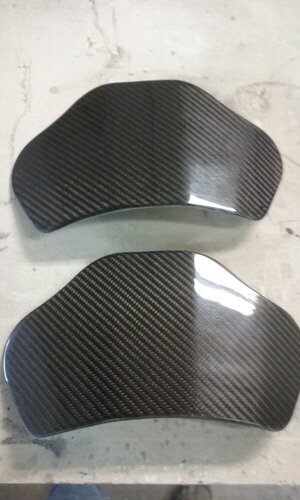schicks
Karma Enforcer
- Location
- West Michigan
I am making these rod holder fishing belts for a buddy. He really wanted full carbon, i said ok, figured it would be a good opportunity to do some testing. Here are the details.
both parts infused using epoxy resin.
both parts used quadaxial 24 oz material in glass and in carbon.
both parts got 4 layers.
weight difference:
Glass 183 grams
Carbon 181 grams
there is a noticeable difference in rigidity between the two. Carbon part is more rigid, where the glass has a little flex.
When it comes to jet skis, fiberglass is the material to use in my opinion (might change). That little bit of flex goes a long way when you're sending a ski 10ft into the air. Ive seen a lot of cracked carbon hulls in my day, not so many cracked fiberglass hulls.
Im going to make more test samples and put them on a 3 point bend test to failure. I think i know what the result will be, but im just curious what failure load and mode will be.

both parts infused using epoxy resin.
both parts used quadaxial 24 oz material in glass and in carbon.
both parts got 4 layers.
weight difference:
Glass 183 grams
Carbon 181 grams
there is a noticeable difference in rigidity between the two. Carbon part is more rigid, where the glass has a little flex.
When it comes to jet skis, fiberglass is the material to use in my opinion (might change). That little bit of flex goes a long way when you're sending a ski 10ft into the air. Ive seen a lot of cracked carbon hulls in my day, not so many cracked fiberglass hulls.
Im going to make more test samples and put them on a 3 point bend test to failure. I think i know what the result will be, but im just curious what failure load and mode will be.

Last edited:

